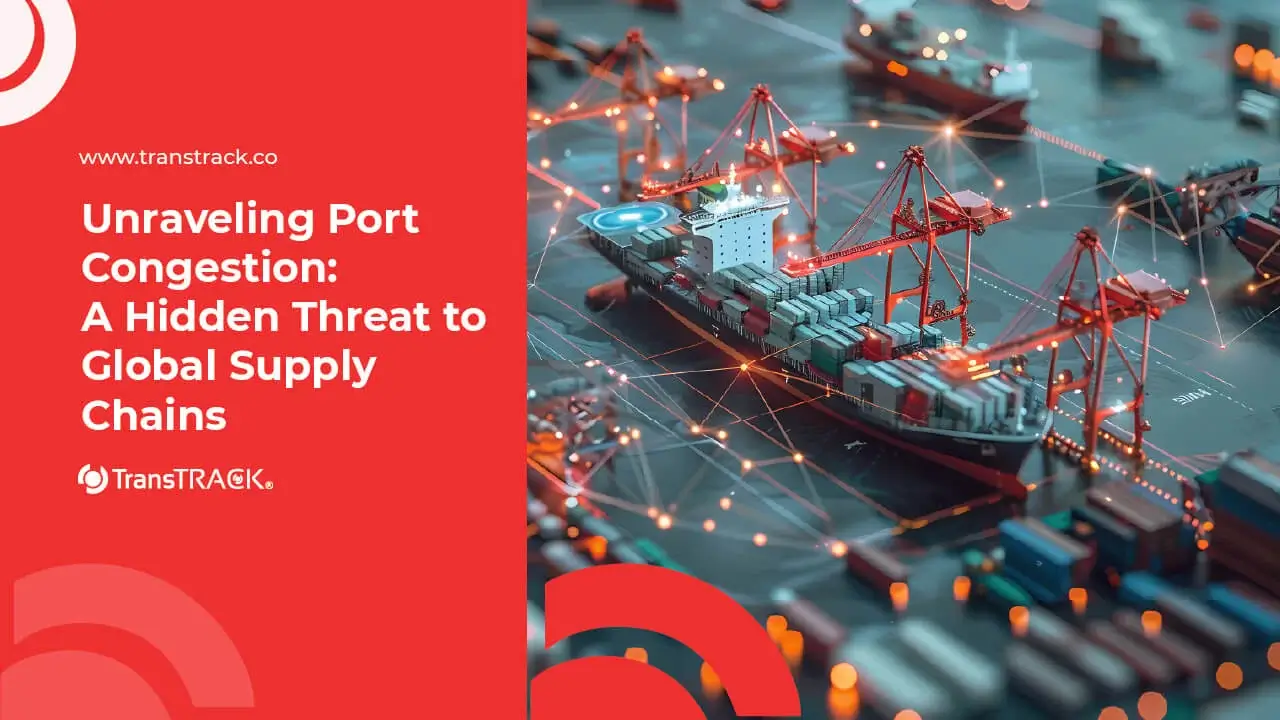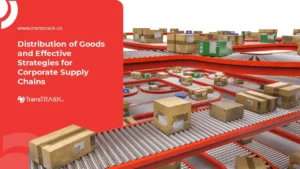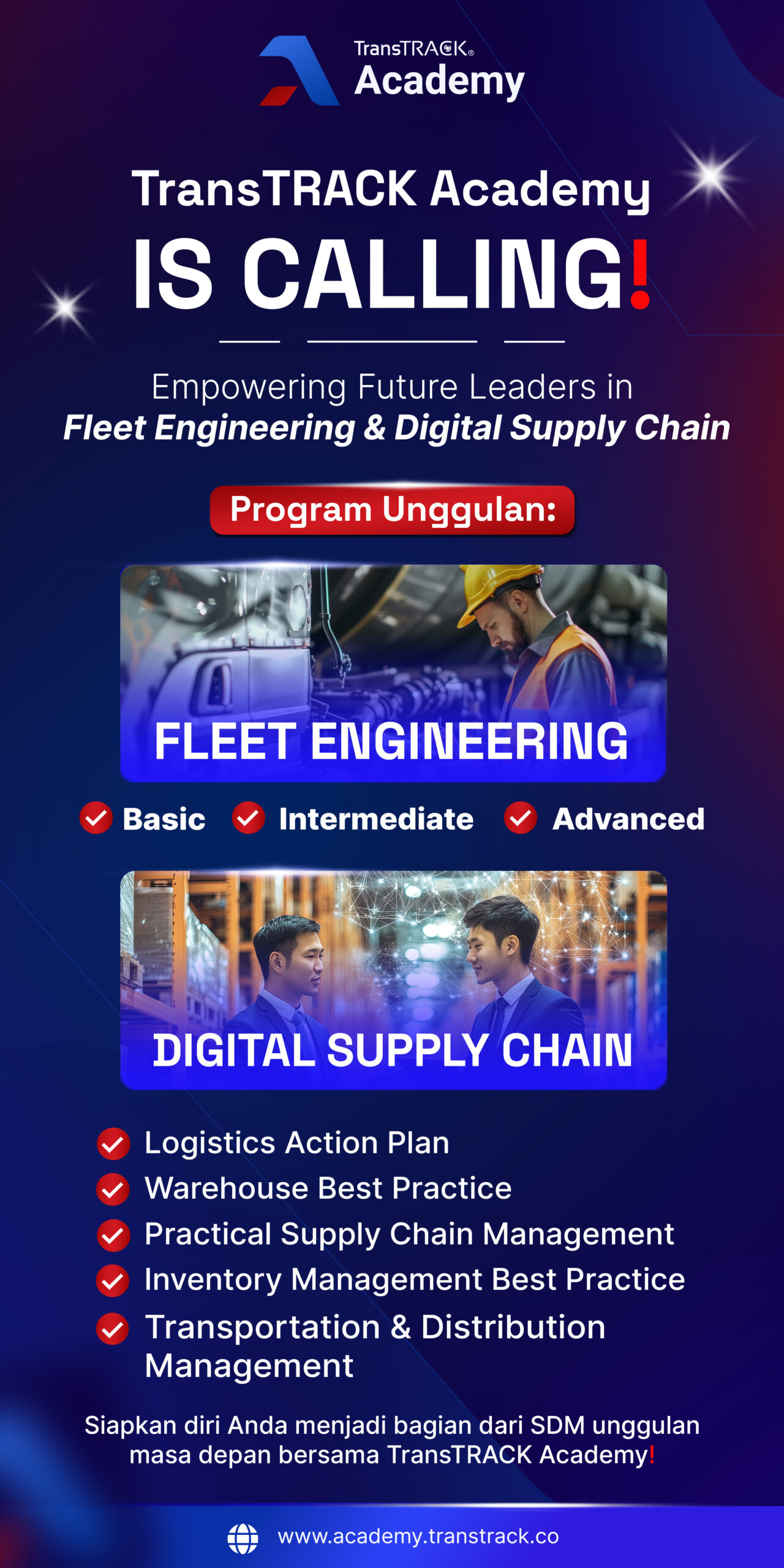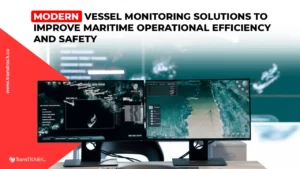Unraveling Port Congestion: A Hidden Threat to Global Supply Chains
Posted on May 1, 2025 by Nur Wachda Mihmidati

In recent years, the logistics world has been facing major challenges due to the increasing frequency of port congestion. From long ship queues to delays in the distribution of goods, the impact of this congestion is not only felt at the port, but also spreads throughout the supply chain-from producers, distributors, to end consumers.
In the midst of this complexity, industry players are required to adapt with smarter and more scalable solutions. Digitalization and technology utilization are key to improving operational efficiency, reducing lead times, and preventing ongoing logistics losses. One increasingly relevant approach is the use of real-time vessel monitoring systems, such as Vessel Monitoring System from TransTRACK.
What is port congestion?
Port congestion is a condition when a port experiences overcrowding due to the volume of ships, goods, or logistics activities exceeding the operational capacity of the port. As a result, there are queues of ships waiting to berth, unload, or load, as well as delays in the distribution of goods.
What causes port congestion?
Port congestion (port congestion) occurs when the flow of incoming vessels and goods exceeds the port’s service capacity. This condition can lead to long queues of ships, distribution delays, and increased logistics costs. Here are some of the main factors that cause port congestion:
Sudden spike in cargo volume
When there is a sudden increase in the number of goods or vessels (e.g. during the holiday season or post-pandemic recovery), ports can be overwhelmed by the process.
Lack of stevedores or longshoremen
The shortage of workers causes the loading and unloading process to run slowly, extending the time for ships to dock and piling up queues.
Inadequate port infrastructure issues
Limited number of docks, cranes, warehouses, or distribution channels hamper the flow of ships and goods.
Weather disruptions, lockdown policies, or strict inspections
External factors such as storms, fog, pandemics, or strict inspections from customs can slow down or temporarily stop port operations.
In general, port congestion occurs due to an imbalance between port operational capacity and actual logistics demand.
Impact of Port Congestion on Supply Chain
Port congestion has a far-reaching impact on supply chain efficiency and resilience. When ports are unable to accommodate the smooth flow of incoming and outgoing logistics, the entire goods distribution system can be disrupted. The following are the main impacts:
1. Delays in Goods Delivery and Distribution Schedule
Port congestion causes ships to wait longer to be able to dock and carry out the loading and unloading process. As a result:
- Delivery schedules for goods to warehouses or customers are delayed.
- Downstream activities in the supply chain (such as production or store stock replenishment) are affected.
- The potential for stockout increases, especially for items that rely heavily on just-in-time delivery.
2. Ballooning Logistics Costs
When ships and cargo are detained at the port, various additional costs arise, such as:
- Demurrage: Container rental fees due to delays in loading and unloading at the port.
- Detention: The cost of delay in returning a container to its owner.
- Extra handling: Additional handling or moving of containers due to unavoidable buildup.
- Additional costs for finding alternative modes of transportation to speed up distribution (e.g. moving shipments from sea to air).
3. Disruption to Retail, Manufacturing, and E-commerce Industries
These sectors rely heavily on the smooth flow of goods. Impacts include:
- Retail: Empty store shelves, especially for imported or seasonal products (such as Christmas goods, Ramadan, etc.).
- Manufacturing: Raw materials or components are late getting into the factory, so the production line can be halted or disrupted.
- E-commerce: Customer orders are delivered late, leading to decreased customer satisfaction and reputational damage.
Port congestion poses a serious threat to the stability of global supply chains. Therefore, companies need to anticipate with adaptive logistics management systems and the utilization of technology for better visibility and coordination.
How to Address Port Congestion?
Reducing or avoiding port congestion requires a strategic and collaborative approach from various parties in the logistics ecosystem. Here are some common practical solutions:
1. Ship Rescheduling and Container Slot Booking System
- Ports can implement a slot time system for ships to berth, so that ships only come according to a predetermined schedule, reducing queues.
- Digital booking for containers allows for more organized cargo management, avoiding backlogs and ensuring the availability of efficient handling facilities.
- Technologies such as vessel traffic management systems (VTMS) and port community systems are helpful in coordinating vessel arrivals and services in real-time.
2. Port Diversification (Using Secondary Ports)
- Diverting part of the logistics flow to alternative or secondary ports can help distribute the workload and reduce congestion at major ports.
- Logistics companies can strategize alternative routes, including land-sea combinations (multimodal transport), to keep shipments efficient even if they do not go through the main port.
- The government can also play a role by developing new ports and strengthening connectivity between regions.
3. Cooperation between Port Operators and Logistics Companies
- Active collaboration allows for more accurate schedule coordination, data transparency, and capacity planning.
- Integrated platforms that connect ports, shipping lines, trucking companies, and warehouses allow each party to monitor and respond to operational conditions in real-time.
- The use of technologies such as IoT, big data analytics, and AI can help forecast congestion and make preventive decisions.
By combining technology, operational policies, and cooperation among stakeholders, port congestion can be minimized so that the supply chain runs more smoothly and efficiently.
Technology and Digitalization to Tackle Port Congestion
Digitalization is key in improving port operational efficiency and reducing congestion. By leveraging the right technology, various processes in the port ecosystem can be better automated, predicted and coordinated. Here are some relevant technology solutions:
1. Transportation Management System (TMS) and Port Community System (PCS)
- TMS helps logistics companies and freight forwarders plan, track and optimize cargo movement to and from the port.
- PCS is a digital platform that connects all parties at the port (Pelindo, customs, ship agents, trucks, forwarders, etc.) to accelerate data exchange, speed up the clearance process, and avoid duplication of work.
- Both improve operational transparency and time efficiency in port logistics management.
2. IoT for Container Tracking and Ship Queue Management
- IoT (Internet of Things) sensors allow containers to be tracked in real-time, including position, temperature (for reefer), and security status.
- On the port side, IoT is also used to:
- Monitoring the position of ships waiting to dock.
- Manage truck traffic in the port area.
- Adjust berth allocation based on actual vessel and container flows.
- The result: data-driven decision-making and significantly reduced lead times.
3. AI and Data Analytics for Port Demand Prediction
- Artificial Intelligence (AI) is used to analyze historical and real-time data trends to predict vessel and cargo flow surges.
- Ports can organize vessel, manpower and equipment schedules based on demand predictions to avoid operational bottlenecks.
- In addition, AI can also be used in simulation and planning of emergency scenarios, such as port closures due to extreme weather.
By integrating TMS, PCS, IoT, and AI, ports and logistics players have much better visibility, coordination, and responsiveness capabilities, which is critical to address port congestion in a systematic and sustainable manner.
Port congestion is a real challenge that can disrupt the smooth running of global supply chains. However, with the right management strategy and the support of digital technologies such as TMS, PCS, IoT, and AI, ports and logistics players can reduce the negative impact of congestion and improve operational efficiency.

One of the innovative solutions to overcome this challenge is by using TransTRACK’s Vessel Monitoring System. This system allows you to monitor vessel movements in real-time, optimize berthing schedules, and reduce waiting time at ports. With comprehensive visibility into your marine fleet, you can respond faster, plan more precisely, and maintain the reliability of your supply chain.
Optimize your port operations and ocean logistics with TransTRACK. Contact us today for a demo and customized solution.
Recent Post
Topic :
Recommended Articles

 Bahasa Indonesia
Bahasa Indonesia







